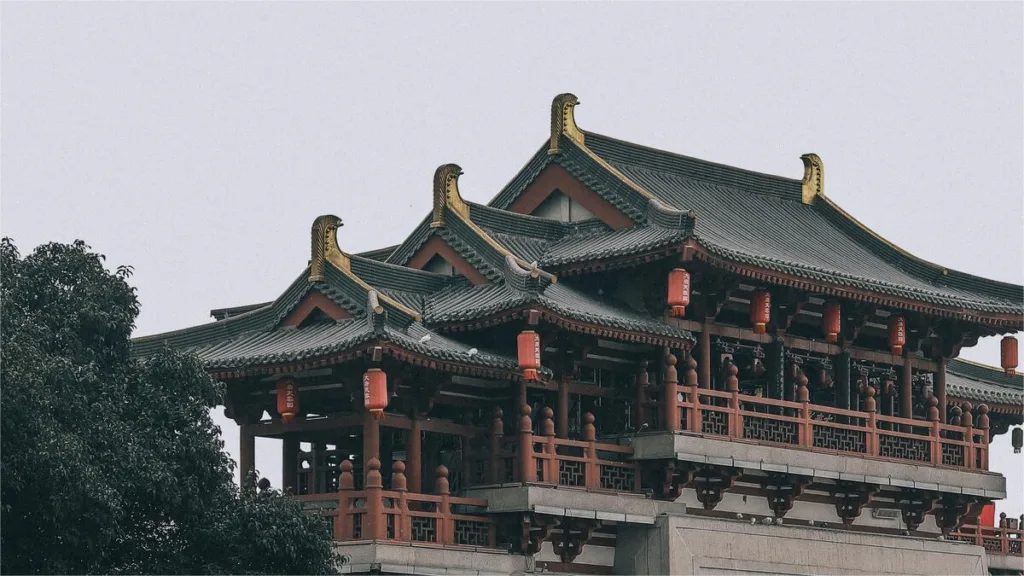西安有名的 6 座古代宫殿


Xi’an, as an ancient capital of China, boasts a rich array of palace ruins, representing different architectural styles from various historical periods and reflecting the social customs and cultural heritage of their respective eras. Here is a detailed introduction to some famous palaces in Xi’an:
Afang Palace (阿房宫)
Dubbed as the “Number One Palace Under Heaven,” Afang Palace was the imperial palace built during the Qin Dynasty, constructed in the 35th year of Qin Shihuang‘s reign (212 BC). Afang Palace, along with the Great Wall, the Mausoleum of Qin Shi Huang, and the Lingqu Canal, are known as the “Four Great Projects of Qin Shihuang.” Located in Wangsi Street, Fengdong New City, Xixian New Area, Xi’an, it covers an area of more than 600,000 square meters. The Afang Palace site has been listed as a national key cultural relics protection unit and has been recognized by the United Nations as one of the largest palace foundations in the world.
Daming Palace (大明宫)
The political center and national symbol of the Tang Dynasty, Daming Palace was located in the northern part of Chang’an (present-day Xi’an). Built in the eighth year of the Zhen Guan reign (634 AD) of Emperor Taizong of Tang, it covers an area of about 3.2 square kilometers and was known as the “Palace of a Thousand Rooms.” From Emperor Gaozong onwards, most of the Tang emperors resided and handled state affairs here, serving as the political center of the country for more than two hundred years. The Daming Palace site has now been developed into the Daming Palace National Heritage Park, where visitors can experience the prosperity of the Tang Dynasty firsthand.
兴庆宫 (兴庆宫)
The political center of the Tang Dynasty during the reign of Emperor Xuanzong, Xingqing Palace was also the long-term residence of his beloved concubine Yang Yuhuan, known as the “Inner Palace” of Chang’an and one of the “Three Palaces” of the Tang Dynasty. Xingqing Palace witnessed the prosperity of the Tang Dynasty during the reign of Emperor Xuanzong and served as an important carrier of Tang culture.
Weiyang Palace (未央宫)
Weiyang Palace was the main palace of the Western Han Dynasty, serving as the political center and national symbol of the Han Dynasty. Built in the seventh year (200 BC) of Emperor Gaozu Liu Bang’s reign, under the supervision of his minister Xiao He, it was located on Longshou Yuan, the highest point of the southwestern corner of Chang’an City. With a total area of about 5 square kilometers, it was one of the largest palace complexes in ancient China and profoundly influenced the subsequent architectural layout of palace cities in China. As the political and administrative center of the Han Empire for over 200 years, Weiyang Palace has become synonymous with the Han Palace in the poetry of later generations. Additionally, Weiyang Palace served as the eastern starting point of the Silk Road, where Zhang Qian received Emperor Wu of Han’s decree to embark on a diplomatic mission to the Western Regions, thus ushering in the opening of the Silk Road.
Jianzhang Palace (建章宫)
Established in the first year (104 BC) of the Taichu reign of Emperor Wu of Han, Jianzhang Palace was the main palace of the Han Dynasty in Chang’an and represented the highest level of architectural art during the Western Han period. The palace complex was surrounded by city walls, with numerous halls distributed inside, including the front hall, the Twin Phoenix Tower, the Divine Altar, and the Taiye Pond. The layout of Jianzhang Palace featured a central axis formed by the Round Gate, the Jade Hall, the Front Hall of Jianzhang, and the Tianliang Palace, with other palace buildings distributed on both sides, all surrounded by corridors. With its grand scale and “thousands of gates and windows,” Jianzhang Palace fully demonstrated the prosperity and grandeur of the Western Han period.
华清宫 (华清宫)
Also known as the “Huaqing Hot Spring,” Huaqing Palace was a palace where Tang Dynasty emperors would retreat for leisure activities. Located in Lintong District, Xi’an, Shaanxi Province, it is backed by Mountain Li and faces the Wei River, with magnificent buildings scattered across the Li Mountain. Huaqing Palace was initially constructed in the early Tang Dynasty and flourished during the reign of Emperor Xuanzong, becoming a political center and tourist destination. However, after the Anshi Rebellion, the popularity of Huaqing Palace declined rapidly, and subsequent emperors of the Tang Dynasty rarely visited the palace. After liberation, Huaqing Palace underwent large-scale expansion and has preserved a large number of historical relics and cultural relics. At the same time, Huaqing Palace is also one of the first batch of national 5A-level tourist attractions, attracting numerous visitors with its rich historical and cultural connotations and unique natural landscape.